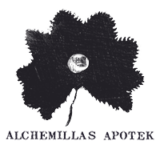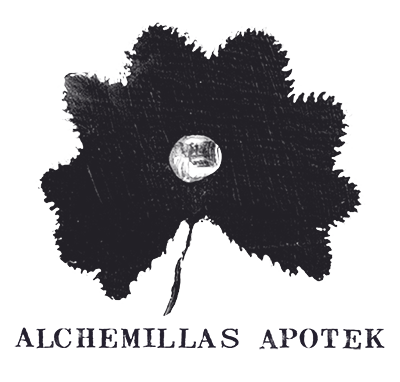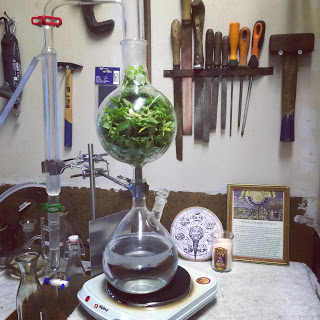Spagyrics is the practical application of the cosmology of alchemy. One is theory, the other is practice. Spagyrics is a process of creating philosophical medicines that are made in harmony with the nature of the substance being worked with- mainly minerals, metals and plants. In this case plants. The word spagyrics comes from two Greek words “Spao” meaning to separate, and “gyro” meaning to combine. Thus, a certain natural substance is separated into its principle components, exhalted or concentrated, and recombined into a higher state of being.
The Mercury principle is composed of the Water and Air elements, and as such, is a mediator between the volatile or etheric elements, and the fixed elements. In traditional Greek mythology, Mercury was the messenger of the gods, and was in constant movement between the above and the below. Within the human body, Mercury is the spirit, or the animating life force. Whereas Sulfur is the soul, or the consciousness of the individual, Mercury is the life force that move through the soul and gives it life. As the mediator, it is the vehicle that brings the soul down into the physical world.
Within the botanical kingdom, Mercury is reflected in the alcohol and water soluble constituents of the plant, called secondary metabolites in pharmacognosy. If you take any plant on the face of the planet and ferment it, which in alchemy is considered a death (it putrefies or rots), you yield ethyl alcohol. You put a plant through a sort of death experience, and what is released is alcohol, which is the same in every plant. The spirit is released. This is why alcohol is commonly called spirits. So the spirit of the plant is the alcohol and water components of the plant. This is highly Mercurial in nature because alcohol tends to extract more volatile (Air) constituents (resins, essential oils) and water tends to extract more fixed (Water) constituents (polysaccharides, glycosides, alkaloids). Thus, the spirit, or Mercury of a plant brings together or harmonizes the two sides of the spectrum of botanical constituents.
Sulfur is a harmony of the Air and Fire elements. In that way, it is moveable, penetrating, hot, and diffusive. Within the human body, the Sulfur principle is reflected as our soul. The soul under this definition is our own unique expression of the life force. It is our individuality, our true essential nature, our essence. It is the flame of our awareness. The correlation with Air is that our soul is not limited to our body, it has the ability to leave the body through astral projection, dream travel, and visionary journeying.
This can be better understood when looking at the Sulfur principle within plants, which is reflected in its volatile (essential) oils. The essential oil of a plant is a reflection of its essence. It is that plant’s unique flavor. When one smells an essential oil of Frankincense for example, you are connecting with that plant’s unique identity; there is no other smell on the face of the planet that smells like it. It is the dynamic expression of the life force within that particular plant. Like Fire and Air, the essential oils of a plant volatilize very easily (they disperse through the air) and they are often very heating and intense.
In botanical kingdom, the Salt principle is reflected in the mineral matrix of the plant. These are obtained through certain extraction methods using the Fire and Water elements to crystallize pure mineral salts. As with the human, these minerals are the vehicle (the body) through which the Sulfur (essential oil/soul) and the Mercury (alcohol/water solubles/spirit) principles work through.
As far as botanical extracts go, it is these three principles that are primarily worked with in their preparation. Each principle of a plant is separated and purified, and then the three are reunited. This is the principle behind spagyrics- to separate and recombine. Solve et Coagula.
Most conventional herbal tinctures contain only the Mercury and Sulfur components of a plant. They macerate the herb in an alcohol and water menstruum for a period of time, filter the liquid material out and compost or throw away the solid plant material. Thus, majority of tinctures are missing 1/3 of a plant’s constituents, the mineral body through which the other constituents work through. It is disembodied medicine.



 English
English Svenska
Svenska

